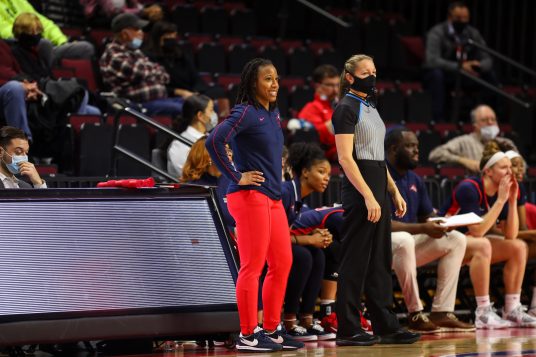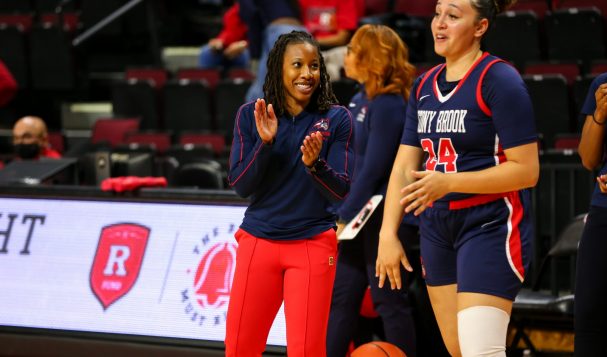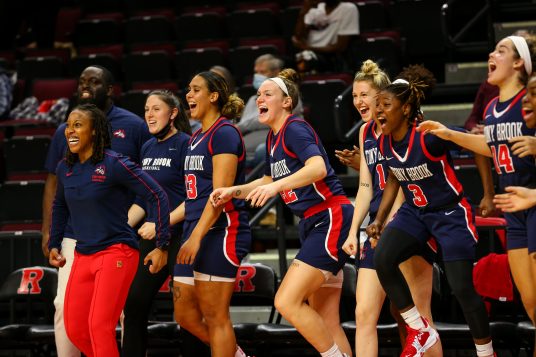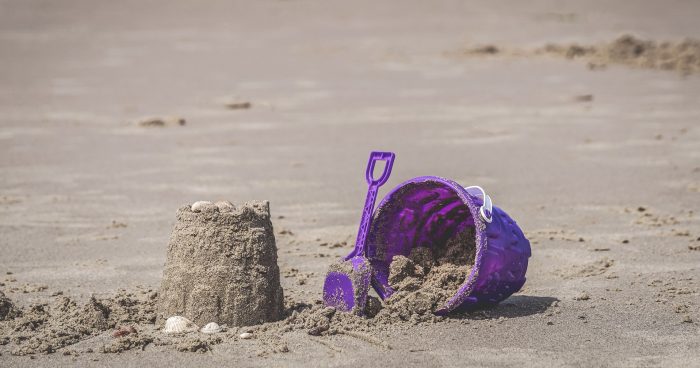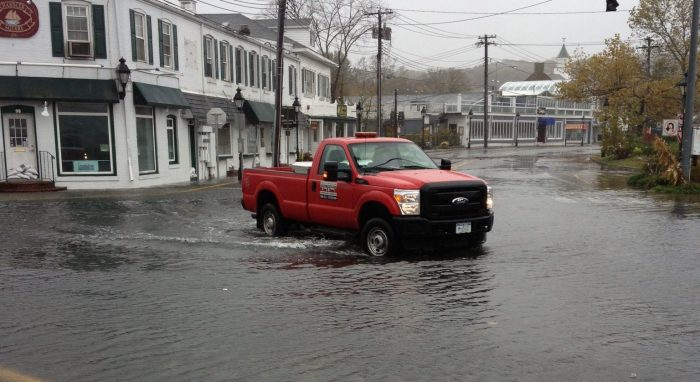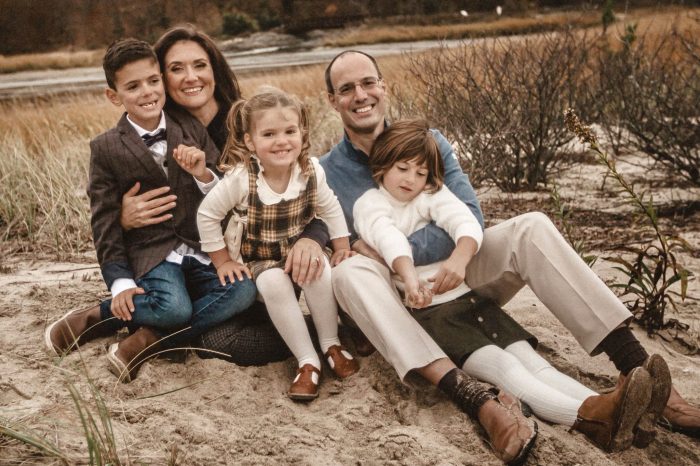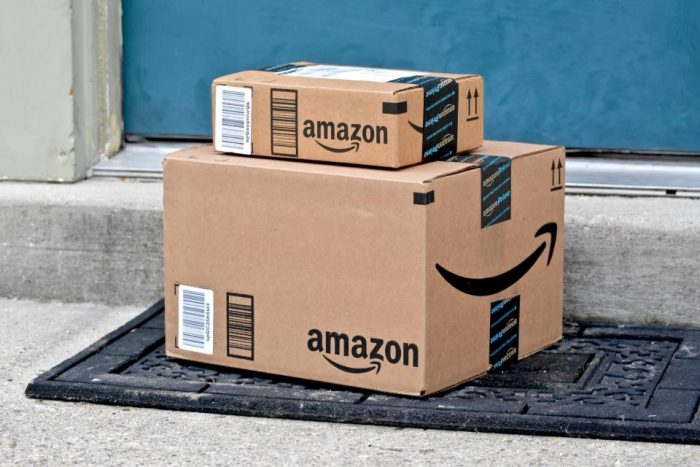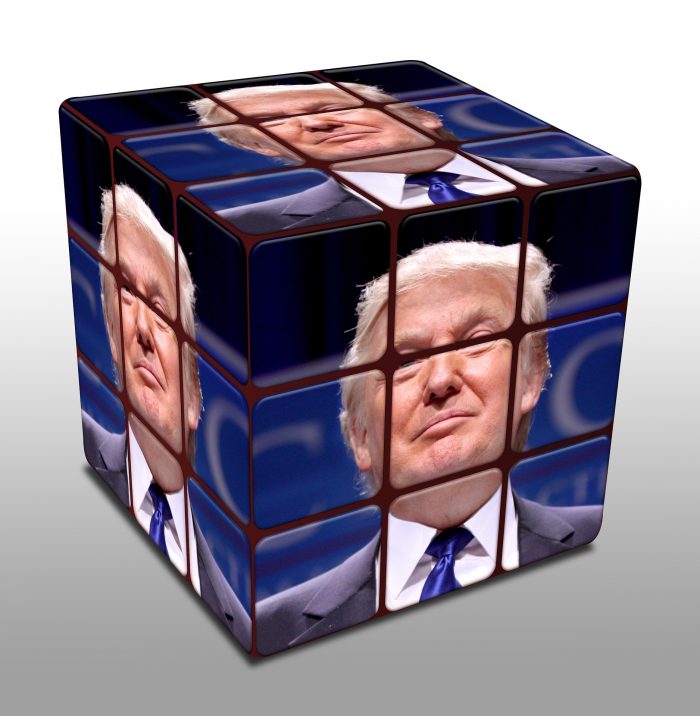By Daniel Dunaief

Before each game, the Stony Brook University women’s basketball team meditates.
The pre-game ritual, among other changes and additions first-year Coach Ashley Langford instituted, has worked, as the team has a 7-1 record and sits first in the America East division.
Meditating “calms us and helps us visualize what we want to see in a game,” said India Pagan, a starter for Stony Brook and a graduate student with an extra year of eligibility because of the COVID pandemic.
A standout guard for Tulane University who finished her college career first in assists, Langford appreciates how hard the team has worked and how well they’ve come together.
“Our chemistry has been really good early on, to the point where, sometimes, [I wonder] is it November or is it March?” she said.
With five players averaging double digits in scoring, Stony Brook becomes harder to guard.
“On any given night, we’re moving and sharing the ball,” Langford said. “They are selfless. They don’t care who has the most points.”
While earning a spot in March Madness this year for just the second time in the program’s history would be rewarding, Langford focuses on each game.
“I’m a person that stays in the moment,” Langford said. “As long as we’re getting better, that puts us in a position to win the next game.
To that end, Langford would like the team to continue to improve in its transition defense.
She would like to see the team, which includes starters Earlette Scott, Gigi Gonzalez, Leighah-Amori Wool, Anastasia Warren and Pagan, continue to collect more offensive rebounds.
Langford’s assistant coaches, which includes recruiting coordinator Shireyll Moore, have been searching for players who might join the program as student-athletes.
“We’re in the position we are today because we have pretty good players,” Langford said. “My staff does a lot of this. They are more actively involved in the recruiting” each day.
Stony Brook has signed three current high school seniors and is focusing on juniors.
Before each game, Langford’s assistant coaches watch film of their opponents. They give her a cheat sheet before she watches film as well.
While Langford plans to stick to the team’s strengths, she will add a few wrinkles depending on the insights she gains about her opponents.
In the team’s first loss, Pagan and Warren were unavailable to play for medical reasons.
The team could have gone to Fordham feeling defeated, but the players fought to the end in a game they lost, 71-59.
“They don’t like losing, we don’t like losing,” Langford said. “They have responded well this week.”
The start of a season as head coach has taught Langford several lessons, including pacing herself and, in particular, protecting her voice. She drinks tea all day long and tells her staff to remind her not to yell in practice, because she shouts over the band at games.
In practice, Langford grabs a ball periodically to demonstrate what she’d like to see from her players.
As for her activity during the game, Langford sits only for about the first 30 seconds and then works the sidelines.
Pagan appreciates the work Langford puts in and the way her new coach has improved her game. While she used to get three or four rebounds a game, she’s often snagging 10 or more.
Pagan also sees herself hustling more, particularly after Langford created a drill where the players dive for loose balls.
“Before, I wouldn’t think of diving for a ball. Now, it’s ingrained into my head,” Pagan said. “The hustle doesn’t stop until the whistle blows. You play until you can’t play any more.”

